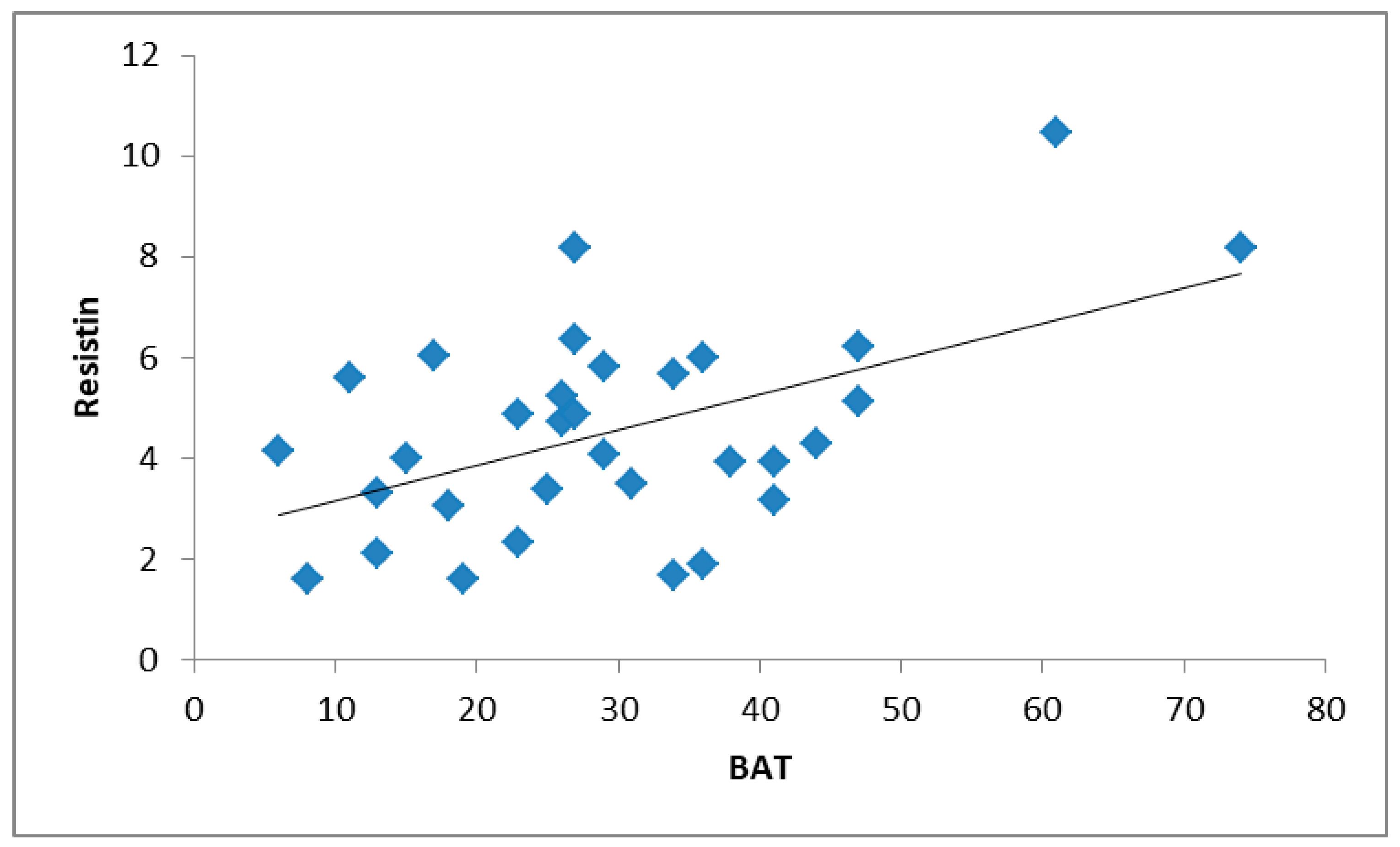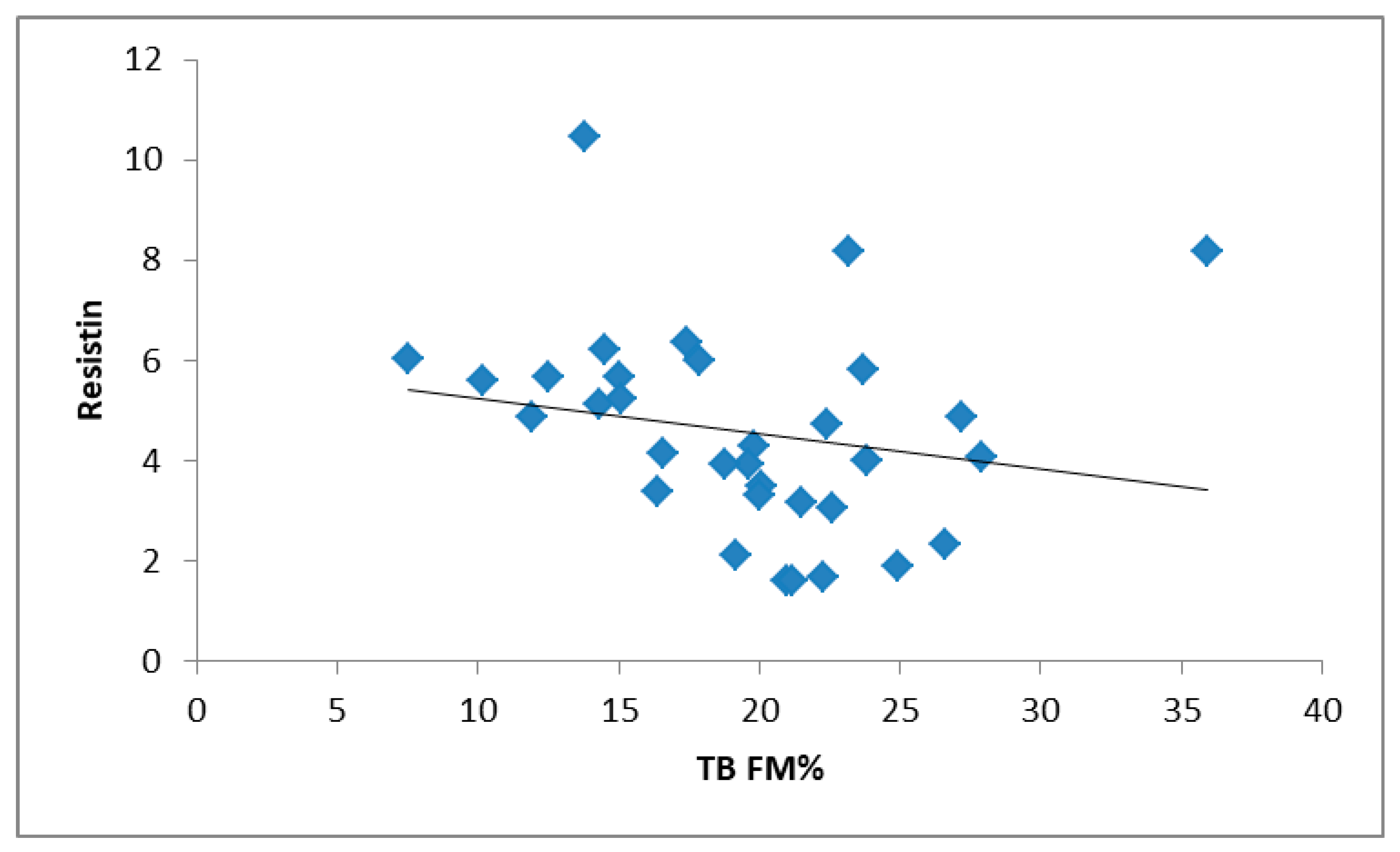1. Introduction
High-level participation in different sport events demands not only a high physical ability, but also a good mental capability [
1]. Mental problems are not rare in elite athletes, with anxiety and depression being the most common disorders [
1]. In comparison to other athletes, rhythmic gymnasts (RGs) are more likely to be dissatisfied and concerned with their body mass and shape [
2] as visual appearance is very important in this field. Body image perception (BIP) has been associated with obesity either as a cause or as a result that affects body mass control behaviours [
3]. Although BIP misperception (either underestimation or overestimation) occurs more in obese individuals [
3], it has been found that RGs have a negative self-perception of their body image and their body size [
4]. An inadequate energy intake is common in elite RGs [
5] and may lead to a negative energy balance in these athletes [
6]. Abnormal eating habits are associated with permanent worries about their body mass and BIP [
7] and this is particularly pronounced during adolescence—a time when RGs have high expectations for themselves and have an impaired BIP [
8]. In addition, the accumulation of body fat and other pubertal changes causes their bodies to deviate from the prepubertal thin body shape considered as an ideal in this sport field, which can cause an impaired BIP among adolescent girls [
9]. Given that RGs are concerned with their body appearance, it is important to measure their BIP and the modifiable risk factors during adolescence to prevent problems in later life.
The biochemical mechanism linking an impaired BIP and body composition is not clear. Adipokines, such as leptin, adiponectin and resistin might be possible candidates to characterise BIP by body composition variables, as positive correlations between these adipokines and BMI have been found [
10]. In addition, a recent study in adolescent girls with anorexia nervosa found that the serum resistin concentration was associated with depressive symptoms [
11]. Specifically, it has been suggested that resistin can inhibit dopamine and noradrenaline release in the hypothalamus and can decrease intrasynaptic monoamine levels, which in turn could lead to the predisposition of the development of depression symptoms [
12]. Accordingly, this may suggest that resistin could be involved in the regulation of emotions and behaviours. We set up a study to describe body image perception (BIP) in highly trained adolescent RGs compared to UCs and the associations of BIP with body composition, daily energy consumption and different blood biochemical markers including resistin.
3. Results
The studied RG and UC groups had similar body height, body mass and BMI values (
Table 1). As expected, in the RGs the TB FM% and TB FM values were lower (
p < 0.05) and the TB LBM was higher compared to the UCs. The mean energy intake and REE were similar between the groups (
Table 1). In addition, insulin, leptin, IL-6 and PAI-1 levels were significantly lower in the RG compared to the UC group (
Table 2).
There were no differences in the total BAT scores and its subscales between the RG and UC groups (
Table 3). However, there were more girls (8/33; 24.2%) with an impaired BIP (BAT > 36) in the RG group compared to the UC group (3/20; 15%), but the difference was not statistically different. The RG and UC groups did not statistically differ (
p = 1.000) in the frequency of impaired BIP and the OR = 1.07 [0.29–3.92]. When the RG and UC groups were combined, the serum resistin concentration was not different between the girls with a BAT > 36 and those with a BAT < 36.
In the RG group, the BAT score correlated positively with the resistin level (r = 0.35;
p = 0.047) (
Table 4;
Figure 1). In addition, the resistin level correlated negatively with TB FM% (r = −0.36;
p = 0.040) (
Figure 2) and positively with training duration (r = 0.37;
p = 0.034). The stepwise multiple regression analysis showed that 40.8% of the variability of the BAT was determined by resistin and BMI (
Table 5).
In the UC group, the BAT correlated with BMI (r = 0.48;
p = 0.039). The stepwise multiple regression analysis showed that 21.0 % of the variability of the BAT was determined by total body mass (
Table 5).
4. Discussion
This study found that nearly every fourth rhythmic gymnast (24.2%) had an impaired body image perception (BIP) compared to every seventh girl in the untrained control group (15%), but the difference was not statistically significant. The main finding of the current study is that the association of body image perception, measured by the body attitude test (BAT) with serum resistin values was observed in adolescent RGs. This finding suggests that serum resistin could be a link between BIP and body composition, most likely through fat mass.
It is known that young females competing in leanness and weight-class sports, such as RGs, are at a high risk of developing patterns of disordered eating, which is also associated with psychological problems in later life [
20]. The prevalence of clinical eating disorders among Norwegian female elite high-intensity sport athletes was high—32.2% [
21]. Nowadays, female athletes may become increasingly attractive in the media, which is affected by society and that may be the reason the beauty ideal has emphasised visual appearance as athletic and thin [
22].
Therefore, it is very important to find the girls who are at risk of these health problems and possible risk factors. Body image perception is dependent on body mass and both over- and underweight individuals have been associated with an impaired BIP [
23]. In our study, 21% of the variability of the BAT score in the control girls was determined by body mass. The mean body mass of the UC group (58.4 kg) represents the 50th centile on the Estonian adolescent girl’s growth chart [
24] indicating that the prevalence of impaired BIP in the UC group (15%) could represent the whole population of Estonian girls at this age. Impaired BIP is not a disease itself, but a high BAT score, a measure of BIP, could suggest a high likelihood of eating disorders later in life [
19]. In addition, an impaired BIP may predict unsafe weight loss behaviours among adolescent normal weight females; thereby, excessive high-volume training to change the body appearance is associated with impaired BIP [
25].
Our results showed that in RGs 24.1% of the variability of the BAT score was determined by resistin alone and 40.8% was determined by resistin together with BMI, suggesting an important role of this biomarker in BIP. We also described that the serum resistin level was positively correlated to BIP measured by the BAT. Resistin, an adipose tissue-derived low-grade inflammation marker is produced by different cells: adipocytes, macrophages, myocytes and pancreatic cells. The physiological role of resistin in humans is still unclear and studies in animals have shown different and conflicting results [
12]. For instance, obesity induced by a high-fat diet or the mutation of the leptin gene or receptor is associated with increased circulating resistin concentrations, whereas resistin expression was downregulated in rodent models with diet-induced obesity and suppressed by free fatty acids [
12]. In our UC group we did not find significant correlations between the serum resistin level and body mass, BMI or TB FM%, similar to the study of 302 adolescents where the resistin level correlated with BMI, triceps skinfold, arm circumference, arm fat area and FM among obese subjects, but not in adolescents with a normal BMI [
26]. However, in the RG group, the serum resistin level correlated negatively with TB FM%. Therefore, the association between resistin and the BAT score could be mediated through body composition, most likely through FM.
In the general adult population, the resistin level has been found to have a inverse association with physical activity [
27]. Our study did not find differences in the serum resistin level between the RGs and the UCs, which is similar to the study by Roupas et al. [
28]. However, the training duration was significantly correlated with the resistin level in the RG group but not in the UC group. It has been suggested that rhythmic gymnastics is more likely anaerobic and therefore the long-term training has no effect on the resistin level [
28].
There have been many studies linking resistin with the development of depression [
11,
29,
30]. There is some evidence that resistin can inhibit dopamine and noradrenaline release in the hypothalamus and can decrease intrasynaptic monoamine levels, which could lead to a predisposition toward the development of depression symptoms [
12]. Resistin is decreased in patients with anorexia nervosa [
31]. To the best of our knowledge, no studies have examined the association of BIP with resistin and depression in RGs. Klinkowski et al. [
32] showed that even though RGs may look physically similar to girls with anorexia nervosa, from the psychopathological point of view, they have very different profiles. The self-report questionnaire about psychological symptoms showed that patients with anorexia nervosa scores were significantly higher on almost all scales and no parallels in psychopathology were found between elite RGs and anorexia nervosa patients. The RG group suffered less from psychological distress than the anorexia nervosa group [
32]. It has been found that depression increases significantly during adolescence, particularly in girls [
33]. The association between BIP and depressive behaviours is not clear, in particular whether an impaired BIP causes depressions or whether patients with depression are more sensitive or more likely to be dissatisfied with their body image [
34]. Filho et al. [
35] concluded that body image dissatisfaction was associated with symptoms of a depressive disorder only in those adolescents who were dissatisfied with their body image due to being overweight, but not in those adolescents who were dissatisfied due to thinness. Probably, adolescent girls that perceived themselves to be overweight but had a normal weight are more liable to develop symptoms of a depressive disorder compared to those that had a more adequate perception of their own body mass [
36]. Unfortunately, our questionnaire did not consist of questions about depression. However, different studies support the finding that resistin may be a biochemical marker linking an impaired BIP, body composition and the development of depression [
29,
30]. Further studies are needed before any conclusions between serum resistin level and the development of depression in high intensity trained RGs can be made.
In RGs, the average energy intake was under the energy requirements for female athletes. It is known that the recommended minimum value of the daily energy intake for female athletes is between 1800 and 2000 kcal [
37]. However, our results are similar to the study by Silva and Paiva [
5], where the average daily energy intake was 1629 (kcal) in 16–18-year-old gymnasts. This finding indicates that the average daily energy intake of RGs is usually lower than the recommended figure.
To the best of our best knowledge, this is the first study investigating the associations between BIP and body composition, daily energy consumption and different blood biomarkers in RGs. In addition, the participants in this study were high level Estonian RGs from different sport clubs. These are the definite strengths of the study. However, there are also some limitations. We did not use a questionnaire about depression which would have given more details about the development of depression symptoms. In addition, the current study is cross-sectional and this limitation reduces the ability to make causal inferences.








